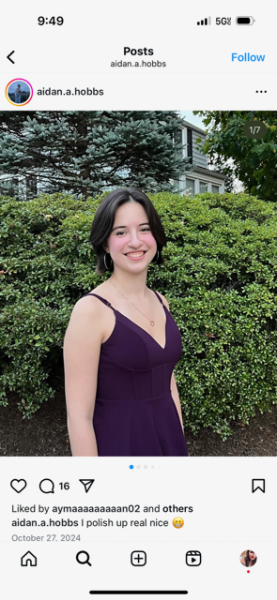Identifying Causes of Non-COVID-19-related Sicknesses at W-L
The information you need to know
Over a year and a half ago, the world received the unfortunate news that a deadly virus, COVID-19, was spreading. Panic and concern increasingly grew as people wondered what the causes and effects of the virus were, what the length of the pandemic was going to be, and how this was going to change daily life. While the virtual world of the pandemic helped people stay safe by preventing contact with the virus, once the doors of public buildings opened and events began again, even with precautions, the effects of our immune systems not being accustomed to being around people were realized. Over the summer, when restrictions became lowered and masks no longer were a requirement (if vaccinated) and people started to leave their homes to spend time with others, the possibility for the community to be introduced to germs that their immune systems were no longer as used to grew. As a result, we are having to combat a series of illnesses not connected to COVID-19.
Junior Lauren Thomas explained how this impacted her. She describes that over the summer, she had a very severe cold with the typical symptoms — headache, sore throat, and stuffy nose.
“It was more severe than colds I’ve had in the past…they’ve mostly just been a cough here and there, but this one that I got I felt pretty terrible. I was pretty rundown for at least four days.” Thomas said. She later mentioned that the lifted restrictions were possible causes of her sickness. “Everything started to open back up this summer after COVID, I was around a lot more people due to the state order being lifted, and I guess life going back to normal. So I think what contributed to that was just being around more people.”
Other students can also recall becoming sick either right away at a school event, like homecoming or a football game, or after attending the first few weeks of school.
“I had a cold. I’m fairly sure I tested negative for COVID, it was right after homecoming, I’m almost certain I got it at homecoming because everyone else did,” junior Evan Barrie said. “I remember, like two days after I woke up, I had a really sore throat…and then the next day I woke up, and I was just too sick. I called in sick to work, and I just kind of sloshed around a bit. I didn’t have any energy, [I was] really snotty all day. And then I remember I had a bad cough for like two weeks afterward. Even once I was feeling better in every other respect, I was still coughing.”
Many outdoor events such as homecoming or football games do not require students to wear masks and simply rely on the use of the students’ best judgment. Barrie mentioned to us that not he, nor anyone he knew, was wearing a mask at homecoming. Students believe that the school has stepped up with its COVID-19 protocols, could always be improved.
“It’s not as safe as it should be, but I think to really have a good learning environment, this is the best that they can do,” Barrie said.
Even those who choose to not attend homecoming or football games state that they have experienced sicknesses from being around others, particularly during lunchtimes or when students have their masks down. Sophomores Sadie Wallander and Annika Kile both discuss these as reasons for their sicknesses.
“I’m not sure if I was in any area where people were unmasked or anyone was exposed to COVID, but I think I was because I knew a lot of people were sick around the same time I was,” Kile said. “Especially some of my friends. So maybe [I got sick] when I was eating lunch with them.”
Wallander commented that sitting with her friends, a common teen situation, may have been a major cause of her symptoms.
“Yeah, I think [I got sick the same way] because I eat lunch with Annika, too. I think a lot of my [people in my] classes just sort of stayed an extra day in school when they were feeling bad and then stayed home the next day. But the day that they were at school, they spread [their sickness] to other people and there was like a week where a lot of people got sick. So I think the cause was probably one of my classes.”
One of the most impacted areas of the school is our nurse’s office, which has to deal with students concerned about all types of sicknesses and injuries, particularly potential COVID-19 symptoms that are simply cold symptoms. The school nurse, Darci Niestroy, discussed how the day-to-day routine of the clinic has changed as an increased amount of students came down with concerning symptoms due to COVID-19.
“From the students that have come to the clinic, over 90% of the time, it’s something non-COVID-related that’s causing their symptoms,” Niestroy said. “That can be other infectious diseases like cold and flu or it could be noninfectious allergies or migraines or any number of things [such as] chronic conditions [or] asthma. Our problem right now is that there is so much crossover we go through…it’s primarily respiratory. But there’s a lot of crossover between old flu, allergies and COVID.”
Niestroy commented that adjustments to the health protocol had to be made, some of which stirred up different opinions from parents and families. “[Students were] trying to stay three feet away, although, at the beginning of the year, they were saying that this was not going to be a restriction,” added Niestroy.
She also mentioned that there is a new isolation room for students who feel symptoms and may need to be separated until released home, while the rest of the nursing station is closed down.
“We have an isolation area,” Niestroy said. “We try and close down the clinic and only allow students in who need medication or it’s an emergency. Until we can get that student out, of course, [to] clean and wipe down that area. I know that we already used [the isolation area] after homecoming and a couple of football games.”
The introduction of new safety concerns and precautions has sparked discussion about how helpful the current protocols are.
“A lot of parents are thinking, you know, we’re being overly cautious, and then we have family from the other side saying we’re not being cautious enough,” Niestroy said.
With the ever-changing status of COVID-19 and new protocols being released, Ms. Niestroy presented a sheet that provides the regulations for the process for students who have symptoms to come back to school. As of November 5, 2021, APS accepts rapid/antigen tests for students with COVID-19-like symptoms. A PCR test is still needed for close contact with COVID-19. All in all, students, teachers, and parents should continue to keep up-to-date with community guidelines regarding COVID-19, wear masks, sanitize both hands and devices, take precautions around groups of people, and continue contact tracing and monitoring symptoms as using best judgment. For more information on safety and statistics regarding COVID-19, please check out the Virginia Department of Health (VDH) website.
To keep everyone safe, a major importance is to take precautions. Some of the tips that students can take to remain healthy are “washing hands, wiping down those game controllers, computers, and phones if sharing,” Niestroy commented.










